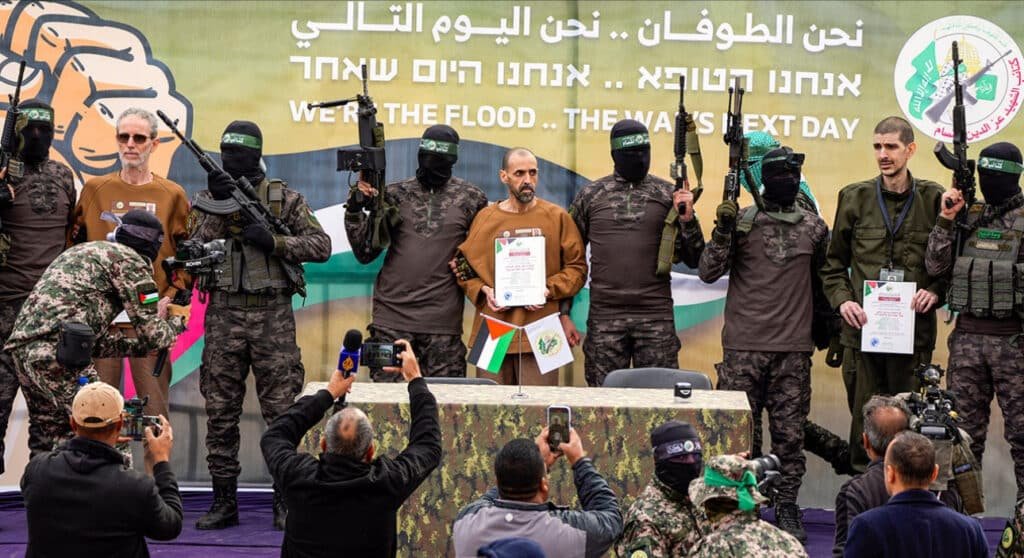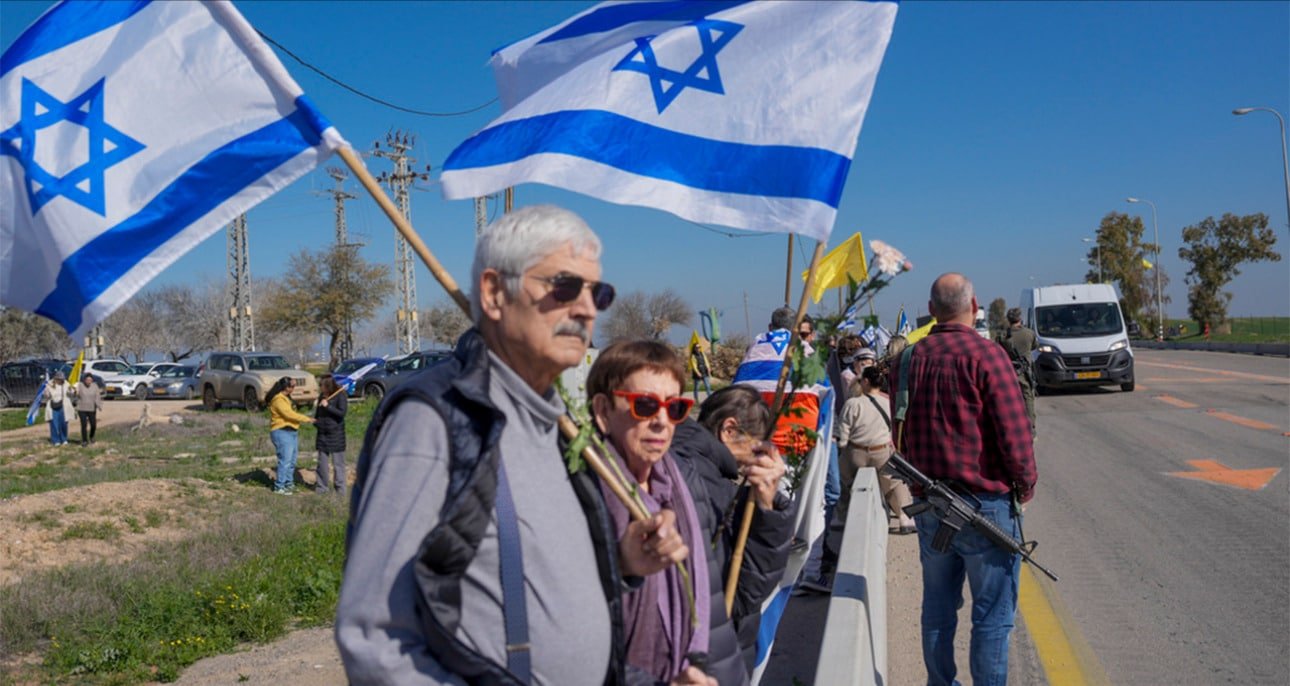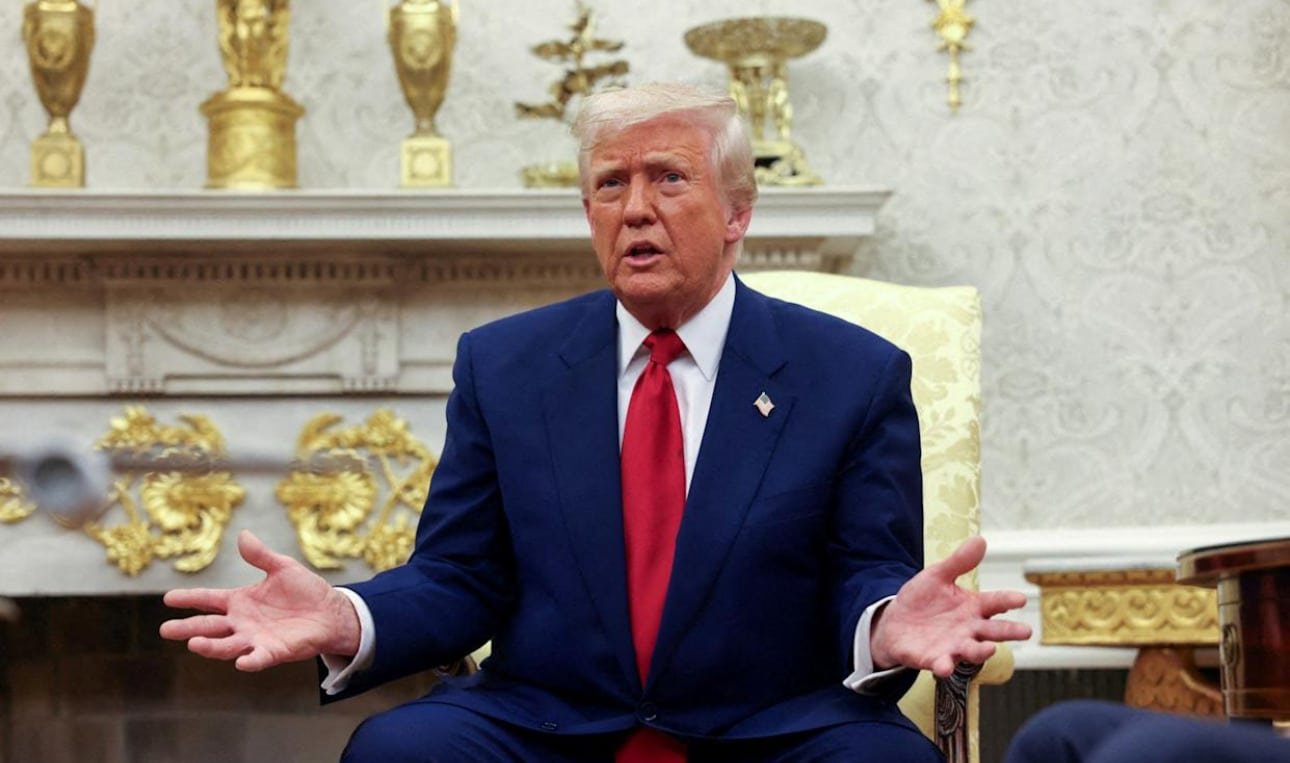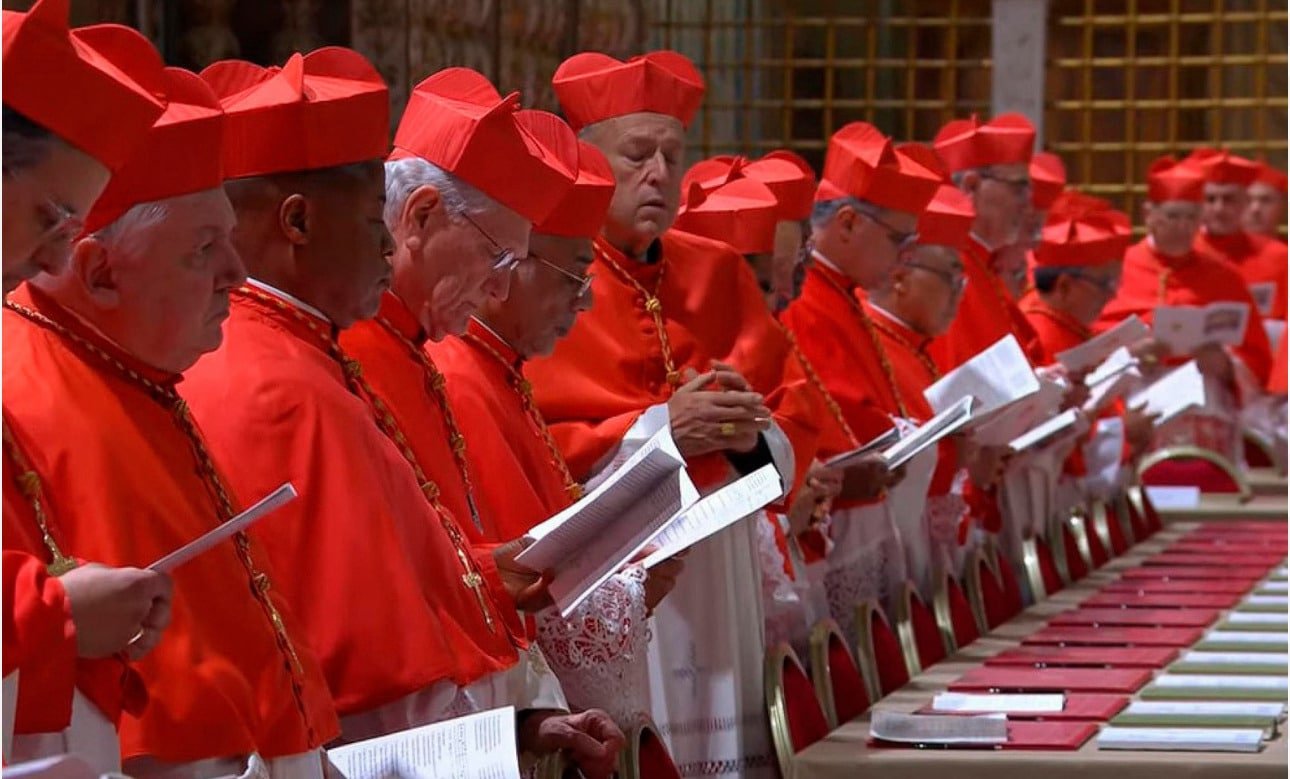Hamas Agrees To Swap 4 Israeli Hostages for Prisoners in Deal
Hamas has agreed to return the bodies of 4 Israeli hostages in exchange for prisoners. This is a big step in the ongoing conflict between Israel and Hamas. The deal was made after a lot of international help to stop the fighting. President Trump said yesterday he would have handled things differently but included it was Isreal decision.
The fighting stopped on January 19, 2025, and a fragile ceasefire was reached. This ceasefire gives hope for peace. The deal shows a move towards peace talks instead of fighting.
As part of the deal, Hamas will give back the bodies of four Israelis. Israel will free about 600 Palestinian prisoners. But, Israel’s delay in releasing prisoners upset Hamas, saying it broke the ceasefire.
Despite this, the ceasefire has mostly held. This allowed the exchange to happen under watchful eyes.
This deal helps the families of the hostages and tries to calm the long conflict. But, with about 60 hostages left in Gaza, the situation is tense. The deal shows diplomacy can work in solving conflicts.
Key Takeaways
- Hamas agrees to return the bodies of 4 Israeli hostages in exchange for Palestinian prisoners.
- About 600 Palestinian prisoners will be released as part of the deal.
- The prisoner release was delayed by Israel, cited as a violation of ceasefire terms by Hamas.
- From January 19, 2025, the ceasefire has led to the release of 25 living and 4 dead hostages.
- Approximately 60 hostages remain in Gaza, with half presumed dead.
- The prisoner exchange deal is scheduled for simultaneous execution amidst international oversight.
- This agreement is indicative of a strategic pivot towards negotiation over violence in the Israel-Hamas conflict.
Details of the Hamas-Israel Agreement
A major breakthrough has happened in the talks between Hamas and Israel. The deal involves Hamas giving back the bodies of four Israeli hostages. In return, Israel will release hundreds of Palestinian prisoners.
This is the first step towards a ceasefire. So far, 33 hostages have been returned, with 8 being bodies.
Overview of the Hostage Swap Deal
Hamas will get nearly 2,000 Palestinian prisoners released. In the first phase, for each Israeli hostage or body returned, about 60 Palestinian prisoners were freed. This includes 23 children and one woman.
The talks were filled with political tension. This shows how complex and contentious such negotiations can be.
Key Figures Involved in the Negotiations
Important people played key roles in these talks. Steve Witkoff, the U.S. special envoy, worked with mediators to finalize the ceasefire. Egypt and Qatar’s envoys also played a big part in the agreement.
Their involvement adds complexity to the negotiations. It shows the global stakes involved.
Reactions from Israeli and Palestinian Officials
The reactions to the agreement are mixed. Israeli authorities are relieved but worried about releasing so many prisoners. Palestinian officials see it as a victory, celebrating the return of their people.
This shows the different feelings the agreement has caused. It highlights its impact on both communities.
Timeline of Events Leading to the Swap
Understanding the timeline leading to the recent Hamas-Israel agreement is key. It shows the events from the kidnappings by Hamas to the final swap. We’ll look at the details.
Initial Kidnapping Incidents
On October 7, 2023, Hamas attacked Israel, causing 1,200 deaths and taking 251 Israelis hostage. The Bibas family was among them, with a tragic end. This violence started the intense negotiations.
Negotiation Process and Mediation Efforts
International mediators, like those from Egypt, were vital in the hostage exchange. Israel was under pressure to release 600 Palestinian prisoners. The situation was tense, with Fox News and others reporting live.
Mediators worked hard to find a solution, despite growing concerns. Seven infant deaths in Gaza due to cold added to the urgency.
Final Agreement and Implementation
A breakthrough was confirmed on a Wednesday by Egyptian mediators. This was a major turning point. Hamas agreed to return four Israeli bodies and release 33 hostages.
In return, Israel would free about 2,000 Palestinian prisoners. As the ceasefire neared its end, both sides were ready for the deal’s implementation.
This agreement brought Israeli captives back from Hamas. It also highlighted the human cost for both sides. The deal could be a step towards better relations between Israel and Hamas.
Impact on Israel-Hamas Relations
The recent hamas prisoner exchange involving the release of 4 Israeli hostages in return for hundreds of Palestinian prisoners promises significant ripple effects on the already volatile relationship between Israel and Hamas. This breaking news stands as a testament to the fraught and complex nature of Middle Eastern diplomacy.
The negotiations leading to this deal have been arduous. Hamas has released 25 living hostages, while Israel has freed over 1,100 Palestinian prisoners. The recent deal to exchange the bodies of four Israeli hostages for more than 600 additional prisoners has raised the stakes.
This hamas prisoner exchange is likely to reshape future interactions between the two factions. Israel has delayed the release of approximately 600 Palestinian prisoners due to reported humiliating ceremonies during the hostages’ release. Yet, the immediate humanitarian gesture suggests a possible renewal of dialogue. Past violence, like the October 7, 2023, attack that caused over 1,200 deaths, and Israel’s military retaliation resulting in over 48,000 casualties in Gaza, has left deep scars.
The public response has been equally telling. The funeral of Shiri Bibas and her young sons in Rishon LeZion, attended by thousands, marked by a moment of silence in the Israeli parliament, shows the intense emotional and political fervor. Each moment of reconciliation is shadowed by profound loss and a powerful drive for justice among the Israeli populace.
Looking toward the future, the end of the first phase of this ceasefire deal on Saturday, with new negotiations slated for early February, will be critical. Whether we will see a thawing in hostilities or an exacerbation of tensions hinges on forthcoming political maneuvers and the capacity of leaders on both sides to transcend historic grievances.
| Event | Date | Outcome |
|---|---|---|
| Ceasefire Begins | January 19 | 25 Living Hostages Released by Hamas |
| October 7, 2023 Attack | October 2023 | 1,200+ Deaths |
| Israeli Retaliation | 2023 | 48,000+ Deaths in Gaza |
| Funeral of Shiri Bibas and Sons | Late 2023 | Thousands of Mourners |
| End of First Ceasefire Phase | Early February | Critical Negotiations |
As this conservative news continues to unfold, we must remain vigilant. The extraction of long-term peace will require navigating a labyrinth of political intricacies, uncompromising national pride, and the relentless quest for justice.
Hamas agrees to return bodies of 4 Israeli hostages in exchange for prisoners
In a big move in politics, Hamas has agreed to give back the bodies of four Israeli hostages. They will do this in exchange for the release of about 600 Palestinian prisoners. This deal shows how complex political news today can be.
Shiri Bibas and her two kids, Ariel (4) and Kfir (9 months), were hostages taken by Hamas in October 2023. Sadly, their bodies were returned last week. A mix-up in the exchange process showed how sensitive these moments can be.
The Israeli military says the Bibas children were killed by their captors. But Hamas claims they died in an Israeli airstrike in November 2023. These different stories add to the politics tension, showing how important clear communication is in conflict.
In the first part of the ceasefire, Hamas gave back 33 hostages, including 8 bodies. But this latest deal won’t have a public ceremony for the return of the four bodies, as a Hamas official said.
This deal has big implications for political news today. The ceasefire between Hamas and Israel is set to end soon after this announcement. The delay in releasing the 600 Palestinian prisoners shows how fragile these agreements can be.
The humanitarian crisis in Gaza is severe. An infant died from hypothermia, the seventh such case in two weeks. Hundreds of thousands of Palestinians are living in bad conditions in crowded tents or damaged buildings.
The conflict has lasted for 15 months, causing a lot of suffering. We need all parties to work fast to help these people. The return of the four bodies is a positive step, but there are many challenges ahead.
The balance of power in this hostage-prisoner exchange shows the complex nature of maga and the conflict. We hope these exchanges will lead to peace and stability in the region.
Conclusion
The Hamas-Israeli agreement marks a key moment in Middle Eastern politics. It goes beyond just political news. Hamas will return four Israeli hostages for about 600 Palestinian prisoners. This deal shows the complex mix of diplomacy and conflict resolution.
The deal also includes a ceasefire plan. It’s the first step to return 33 hostages, including eight bodies. This highlights the human cost of the long struggle between Hamas and Israel.
The story of Shiri Bibas and her children’s abduction on October 7, 2023, is heartbreaking. Tens of thousands of Israelis mourned their loss. The conflict, starting with Hamas’s attack, killed around 1,200 Israelis and over 48,000 Palestinians.
Despite the tragedy, the agreement might reduce violence. But, it depends on future actions by Israel, Hamas, and international groups. They must follow humanitarian rules.

This deal is more than just a trade. It’s a fight for justice and peace. The high number of casualties and displaced people in Gaza is shocking. The world must help find a peaceful solution.
As the ceasefire continues, we must watch closely. We should push for solutions that protect everyone. And we must always remember the value of human life and dignity.
FAQ
What was the nature of the recent agreement between Hamas and Israel?
Who facilitated the negotiations for this agreement?
How did both Israeli and Palestinian sides react to the agreement?
What events led to the final agreement?
What does this deal mean for the future relationship between Israel and Hamas?
What are the specifics of the hostage-prisoner exchange?
Source Links
- Middle East: Gaza ceasefire back on after hostage deal
- Middle East latest: Hamas will return bodies of 4 dead Israeli hostages in exchange for prisoners
- Hamas will turn over bodies of 4 Israeli hostages in exchange for release of hundreds of prisoners
- Hamas to return bodies of 4 Israeli hostages leaving ceasefire intact
- Hamas to return bodies of 4 Israeli hostages leaving ceasefire intact
- Following delay, Israel agrees to release Palestinian detainees in new exchange as fragile Gaza ceasefire appears intact | CNN
- Breakthrough in Gaza hostage deal as Israel mourns Bibas family
- Israel, Hamas agree on new exchange, leaving fragile ceasefire intact
- Hamas to hand over four Israeli hostages’ bodies
- Hamas agrees to return bodies of 4 Israeli hostages in exchange for hundreds of Palestinian prisoners
- Middle East latest: Hamas will return bodies of 4 dead Israeli hostages in exchange for prisoners
- Hamas will turn over bodies of 4 Israeli hostages in exchange for release of hundreds of prisoners
- Hamas to turn over bodies of 4 Israeli hostages in exchange for release of hundreds of prisoners
- Middle East latest: Hamas will return bodies of 4 dead Israeli hostages in exchange for prisoners
- Middle East latest: Hamas will return bodies of 4 dead Israeli hostages in exchange for prisoners














